Global Journal of Ecology
The influence of air pollution control devices on gas organic pollutants emission from coal-fired power plants based on LCA
Junting Li1, Qing Yang1-3*, Ya Peng4, Shuo Wang4, Jiatao Xiang1, Shihong Zhang1*, Pujie Yue5, Lei Meng5 and Changqing Wang5
2Department of New Energy Science and Technology, School of Energy and Power Engineering, Huazhong University of Science and Technology, Wuhan 430074, PR China
3John A. Paulson School of Engineering and Applied Science, Harvard University, Cambridge, MA 02138, USA
4China-EU Institute for Clean and Renewable Energy, Huazhong University of Science and Technology, Wuhan 430074, PR China
5Datang Environment Industry Group Co., Ltd, Beijing 100097, PR China
Shihong Zhang, State Key Laboratory of Coal Combustion, Huazhong University of Science and Technology, Wuhan 430074, PR China, E-mail: [email protected]
Cite this as
Li J, Yang Q, Peng Y, Wang S, Xiang J, et al. (2023) The influence of air pollution control devices on gas organic pollutants emission from coal-fired power plants based on LCA. Glob J Ecol 8(2): 086-096. DOI: 10.17352/gje.000087Copyright
© 2023 Li J, et al. This is an open-access article distributed under the terms of the Creative Commons Attribution License, which permits unrestricted use, distribution, and reproduction in any medium, provided the original author and source are credited.Air pollutants (e.g., NOx, SO2) emitted from coal-fired power plants in China have been effectively controlled by Air Pollution Control Devices (APCDs) since 1996. However, the gas organic pollutants (typically Volatile Organic Compounds (VOCs) and Polycyclic Aromatic Hydrocarbons (PAHs)) have been overlooked for a long time. In this study, based on the life cycle assessment method, the effect of APCDs (mainly Selective Catalytic Removal (SCR), Electrostatic Precipitator (ESP), Wet Flue Gas Desulfurization (WFGD), and Wet Electrostatic Precipitator (WESP)) on gas organic pollutants (without methane) from three typical coal-fired power plants in China has been evaluated in terms of direct emission removal and indirect emissions. Detecting the gas organic pollutants concentrations at the inlet and outlet of APCDs in these three cases, it is found that the total direct emission removal efficiency is up to more than 71.97%, with SCR’s contribution being the highest. However, the manufacture and equipping of APCDs will lead to indirect emission of gas organic pollutants. The result shows that the SCR system is also the main process that induces indirect emissions of gas organic pollutants, associated with the utilization of liquid ammonia and catalyst. Compared to the direct emission of gas organic pollutants, indirect gas organic pollutants emissions can not be ignored. The calculation of net emission removal and the degree of co-effects shows that APCDs can reduce gas organic pollutants, which results in reducing the photochemical ozone creation potential of 1.81E-06~5.93E-06kg(Ethene eq.)/MW·h and human toxicity potential of 2.51E-03~8.06E-03kg(DCB eq.)/MW·h.
Graphical abstract
Introduction
Existing Air Pollution Control Devices (APCDs) which are deployed in coal-fired power plants are capable of effectively removing conventional air pollutants (e.g., NOx, SO2) [1]. However, as the awareness of serious regional effects of air pollution grew, new challenges emerged in reducing unregulated air pollutants emission, especially gas organic pollutants (e.g., Volatile Organic Compounds (VOCs), Polycyclic Aromatic Hydrocarbons (PAHs)). VOCs are organic compounds with a vapor pressure greater than or equal to 0.01 kPa at room temperature or a boiling point lower than or equal to 250 °C (sometimes 260 °C) at atmospheric pressure [2,3]. PAHs are a series of organic pollutants which mainly consist of two to seven condensed aromatic rings [4]. These gas organic pollutants are precursors for the formation of secondary aerosols and ozone, which are very important to the formation of complex air pollution such as ozone pollution and haze [5]. In North China where coal is the main energy source for electricity and heat, the rate of excellent and good air quality is only about 50% [6].
More significantly, previous studies indicated that because of the carcinogenic, teratogenic and mutagenic effects of organic pollutants, complex air pollution mainly caused by organic pollutants may lead to severe health effects, which may result in 1.2 million premature deaths each year [7-9].
Gas organic pollutants emissions from coal-fired plants in China can not be ignored. In China, raw coal production still accounts for 69.3% of total energy production in 2018, and coal-fired power generation accounts for about 60% of the total electricity generation [10]. It is shown that approximately 4.1% of VOC emissions from industrial sources are due to power generation, and the proportion will keep increasing in the future [11]. Considering the huge consumption of coal each year in China, the gas organic pollutants emissions of coal-fired power plants (CFPPs) should be taken into account in the light of controlling atmospheric pollutants.
In China, due to more and more strict rules on air pollution control, most coal-fired power plants have adopted ultra-clean emission flue gas treatment technologies, which include Selective Catalytic Removal (SCR), Electrostatic Precipitator (ESP), Wet Flue Gas Desulfurization (WFGD), and Wet Electrostatic Precipitator (WESP). It is effective in controlling conventional gas pollutants through these technologies. And the removal efficiency of NOX, SO2, and particulate matter can reach about 90%, 98% and 99% respectively [12-14]. In recent years, many researchers have begun to explore the impact of these technologies on reducing the gas organic pollutants led by VOCs and PAHs. Cheng, et al. found that total hydrocarbon concentration decreased by 60% once the flue gas passed through the SCR device [15].
In some studies, NH3-SCR catalysts (V2O5–WO3/TiO2) were successfully used to remove some gas-phase coal-burning organic pollutants effectively, such as benzene, toluene, chlorobenzene, polychlorinated biphenyl, chlorophenol, and dioxins [16-19]. Lee, et al. showed that during the SCR process, C6H6 and NO were removed simultaneously [20]. Based on the flue gas test of the coal-fired power plant, Wang, et al. found there was an apparent improvement in Polycyclic Aromatic Hydrocarbons (PAHs) removal by WFGD, especially low-volatility 5-ring and 6-ring PAHs [21]. In addition, Li, et al. found that the removal effect of particulate-phase PAHs by WFGD was better than gas-phase PAHs. Meanwhile, they found that the WESP could remove some gas-phase PAHs, but after the WESP, the 5-ring and 8-ring components concentration in the particles has increased [8]. The previous study found that the low-low-temperature electrostatic precipitators had a good removal effect on PAHs, but the general ESP removal effect on PAHs is not ideal and selective [22,23].The total non-methane VOC concentration can increase by 17.3% after passing through the ESP system. This increase may be related to the secondary reaction between unburned carbon and VOCs [15,24]). To sum up, in previous studies, the impact of APCDs on gas organic pollutant emissions during coal-fired power generation were mainly concentrated on direct emission removal, while the indirect gas organic pollutant emissions were overlooked. It is essential to comprehensively evaluate the impact of APCDs of coal-fired power plants on the emission of gas organic pollutants from a systematic perspective.
For life cycle assessment, there are a few studies on the life cycle assessment of gas pollutants control technologies that are used in coal-fired power plants. Liang, et al. studied the environmental impact of the SCR technology, and found the effect of acidification of the SCR technology is the highest amongst all environmental impact [25]. Feng, et al. used the EDIP method to evaluate the environmental impact of two desulfurization technologies (circulating fluidized bed flue gas desulfurization (CFB-FGD) and WFGD), and found that WFGD was relatively environmentally benign when compared with CFB- FGD [26]. Pan, et al. studied the environmental impact of ESP by exergy life cycle assessment, finding the environmental impact potential was reduced by 99.84% through the ESP [27]. Cui, et al. studied the environmental and economic effect of the total ultra-clean flue gas treatment process in coal-fired power plant, and found that desulfurization power consumption was an important factor in decreasing environmental effect and flue gas treatment costs [28]. These studies underpin a foundation for the life cycle assessment of APCDs in coal-fired power plants. However, they did not focus on gas organic pollutants.
Thus the key process of APCDs in controlling gas organic pollutants has not been revealed. Moreover, the gas organic emissions are affected by the capacity of the generator [29,30], but those previous study failed to evaluate this influence. To sum up, there is still a gap in comprehensive knowledge on the life cycle gas organic pollutants emissions of APCDs and the associated environmental impacts.
This study is conducted to comprehensively evaluate the life cycle of gas organic pollutant emissions inventory and the associated environmental impact from APCDs in coal-fired power plants. Taking three typical coal-fired power plant generators in China as a case study, we explored the impact of APCDs of different load generators on gas organic pollutants emission removal and indirect gas organic emissions, based on life cycle inventory. By subtracting indirect emission from direct emission removal, the net emission removal of gas organic is calculated. Then, the life cycle impact assessment based on net emission removal is assessed by the CML2001 method, mainly including human toxicity potential (HTP) and photochemical ozone creation potential (POCP). Gas organic pollutants emissions are focused on while methane emission is excluded because it is more inert than other gas organic pollutants in most photochemical reactions and the toxicity of it can be ignored [31].
Methods
Goal and scope
The crucial goal of the present work is to evaluate the impact of APCDs on gas organic pollutants removal and indirect emissions in coal-fired power plants and the corresponding environmental impacts.
In this study, 1 MW·h of electricity generated from the coal power generation technologies is used as the functional unit. To compare the generators of different capacity (300MW, 600MW, and 1000MW) and flue gas treatment technologies (SCR, ESP, WFGD, WESP), three cases are selected and analyzed in this study, as shown in Table 1.
System boundary
Because for each individual case, the removal of gas organic pollutants will not be affected by the power generation system. Therefore, the power generation system is excluded, while APCDs are focused on the system diagram. The system boundaries of each case included life cycle stages of the construction of APCDs, raw material transportation, and the operation of APCDs, which is shown in Figure 1. Case 1, Case 2, and Case 3 all contain SCR, ESP, WFGD, and WESP systems.
Due to the unavailability of the data acquisition process, the following assumptions and exclusions are made: (1) ignore the recycling water utilization, waste residue treatment, and wastewater treatment process; (2) assume that the transportation of raw materials (e.g., steel, aluminum, liquid ammonia) is road transportation using trucks with a capacity of 12 t, and the distance of transportation is 30 km [32]; (3) not consider the decommissioning phases of APCDs.
Data sources
The material data of APCDs during the operation stage are obtained from Zhejiang Energy Corporation, such as energy consumption, water consumption, limestone, liquid ammonia, etc. Data for the construction stage of APCDs is mainly from engineering reports and literature [32,33]. Direct gas organic pollutant emissions data are obtained by onsite testing and inspecting, which is conducted by Zhejiang University, Research Center for Eco-Environmental Sciences, Chinese Academy of Sciences, and NCS Testing Technology Co., LTD. Gas chromatography-photo ionization detector (GC-PID) and flame ionization detector (FID) are used to quantitatively detect the concentration of gas organic pollutants at the inlet and outlet of WFGD and WESP. The concentration of gas organic pollutants at the inlet and outlet of SCR and ESP is calculated by the removal efficiency of gas organic pollutants by corresponding equipment [15,34].The gas organic pollutants emission data of energy consumption during the construction and operation of APCDs come from the Gabi database and literature 35]. And all organic pollutants emission data of industrial products (steel, aluminum, liquid ammonia, etc.) are directly obtained from the Gabi life cycle database.
Methodology models
The life cycle gas organic pollutants emissions inventory is evaluated from indirect emissions and direct emission removal. Indirect emissions of gas organic pollutants during the construction and operation stage of APCDs are calculated by Gabi. Combined with the emission factor (EF) of the construction input and the operation consumption (input) based on 1MW·h, which is directly obtained from Gabi databases, the indirect gas organic pollutants emission intensity of APCDs (Iindirect) can be calculated, which is shown in the following equation:
The direct emission removal of gas organic pollutants per 1MW·h by APCDs (Idirect removal) can be calculated by equation 2, where Ioutlet means the mass of gas organic pollutants at the outlet of APCDs per 1MW·h; Iinlet means the mass of gas organic pollutants. And net emission removal of gas organic pollutants per 1MW·h by APCDs (intensity of net emission removal: Inet removal) can be calculated by the equation 3.
And life cycle impact assessment is assessed by the CML2001 method. Based on CML2001 method, the environmental impact of net emission removal by APCDs is calculated from six environmental indicators: Abiotic Depletion Potential of fossil fuels (ADP fossil); Global Warming Potential (GWP); Acidification Potential (AP); Eutrophication Potential (EP); Photochemical Ozone Creation Potential (POCP); Human Toxicity Potential (HTP).
Quantification of gas organic pollutants’ co-effects
In order to evaluate the synergistic effects of common air pollutants and gas organic pollutants by APCDs, the degree of co-effects (DCE) is defined as the degree of reduction of gas organic pollutants by APCDs, which is calculated by equation 4, where a means gas organic pollutants, b means one kind of common air pollutants (e.g., NOx, SO2, and PM), ΔEa equals the gas organic pollutants emission reduction and ΔEb equals the common air pollutants emission reduction (e.g., NOx, SO2, and PM). If DCE >0, the emission reduction measure has positive co-effects. If DCE<0, the emission reduction measure has negative co-effects. And the higher the DCE is, the stronger the co-effect is.
Result
Indirect gas organic pollutants emission of APCDs
The life cycle assessment method is used to calculate indirect gas organic pollutants emissions of APCDs in the three cases. The results are shown in Table S1. In the three cases, the range of indirect gas organic pollutants emissions of APCDs are estimated to be 2.46E-04 to 3.18E-04 kg/MW·h, which is shown in Figure 2. And the total indirect gas organic pollutants emissions of APCDs in a year have reached respectively 4.58E+02, 7.34E+02, and 1.44E+03kg. By comparing the three cases, the total indirect gas organic pollutants emissions of APCDs are increasing as the capacity of the generator increases. This reason may be the scale of APCDs is bigger in the generator of higher capacity. During the construction and operation stage, APCDs consume more materials and energy, which has led to increased emissions of pollutants. But for indirect gas organic pollutants emissions for 1MW·h, the higher-capacity generator is lower, which means the environmental benefits of the high-capacity generator is better.
As is shown in Figure 2, the largest share of gas organic pollutants comes from the SCR operation stage, which is up to more than 47% in all cases. In addition, the distribution of gas organic pollutants emissions of WESP operation also reach more than 27%. The distribution of ESP and WFGD are respectively about 2% and more than 9%.
Figure 3 shows the distribution of the emissions of gas organic pollutants from various materials during construction and operation in detail. Among them, on the whole, the emissions of liquid ammonia are the highest, which is up to 26%~32%. In addition, the emissions of electricity, catalyst, and NaOH are also relatively high, which account for more than 11%, 20%, and 19% of total indirect emissions, respectively.
Therefore, in order to reduce the emissions of organic pollutants during the construction and operation of APCDs, there is a need for further optimization of the production process of liquid ammonia, catalyst and NaOH. And there is also an increasing demand for energy use.
Analysis of the impact of APCDs on direct gas organic pollutants emissions
The result of the field test is shown in Table 2, which shows the concentration of gas organic pollutants at the inlet and outlet of WFGD and WESP in three cases.
From Table 3, the average removal efficiency of the gas organic pollutants of WFGD in three cases are respectively 32.51%, 27.91% and 23.15%, respectively. And the average removal efficiency of WESP in three cases are respectively 26.80%, 26.00%, and 22.28%. Compared to previous literature, Li, et al. found the overall removal efficiency of WFGD for PAHs belonging to gas organic pollutants was 27% [8].
The research of Cheng, et al. showed that the overall removal efficiency of WFGD and WESP for VOCs reached 36.8% [15]. Li, et al. also found the overall removal efficiency of WESP for the organic components of condensable particulate matter was 27.1% [8]. And WESP was selective for the removal of PAHs, while the overall removal efficiency was about 52% [8]. Therefore, the result of the field test is relatively accurate. It’s beneficial for the direct removal of gas organic pollutants by WFGD and WESP.
Due to the limitation of test conditions, the concentration of gas organic pollutants at the inlet and outlet of SCR was not detected in this field test. This study has collected data from the literature. Cheng, et al. found that the overall removal efficiency of SCR for VOCs was about 60.7% in an ultra-low emission power plant [15]. And Lu, et al. found the destruction of benzene by SCR was up to more than 67% [20].
For ESP, the research of Cheng, et al. showed it had a negative impact on the removal of organic pollutants, and the concentration of VOCs increased by 17.3% after passing through ESP [15]. Therefore, in this study, the overall removal efficiency of SCR for gas organic pollutants is selected as 60%, and the impact of ESP on gas organic pollutants is selected to increase by 17.3%. In summary, the concentration of gas organic pollutants at the inlet and outlet of SCR and ESP can be calculated, which is shown in Table 3.
From the perspective of total emissions of gas organic pollutants, Case 2 is the lowest of the three cases. The reason for the result is that in three cases, the operating load is different from the rated load. The operating load of three cases is respectively 120, 280, 420MW, and the boiler thermal efficiency is respectively 93.40%, 93.67%, 93.46%. Obviously, the generator is operating under low load conditions in three cases, which leads to a decrease in boiler thermal efficiency [30]. With the decrease in boiler thermal efficiency, the total emissions of gas organic pollutants are increasing [30]. Therefore, the emission concentration of Case 1 is the highest, and Case 2 is the lowest.
The emission concentration change of gas organic pollutants for 1MW·h after all the APCDs is displayed in Figure 4. As is shown in this picture, with the increase in boiler cap capacity, the emission concentration of gas organic pollutants for 1MW·h is decreasing. However, the total removal efficiency of gas organic pollutants is decreasing with the increases in the size of generating units. This shows that the higher-load generator has a better effect on controlling the emission of gas organic pollutants, and with the decrease in emission concentration of gas organic pollutants, the effect of APCDs on gas organic pollutants is also decreasing. This is presumed to be due to the influence of APCDs on gas-organic pollutants with a limited concentration. When the concentration is closer to the limit concentration, the removal efficiency is lower.
The direct emission changes after passing through APCDs are calculated, which is shown in Figure 4. As shown in the picture, SCR, WFGD, and WESP can remove gas organic pollutants. And among them, the effect of SCR is more obvious. Nevertheless, ESP can increase gas organic pollutants with direct emission intensity of 5.98E-04~1.68E-03kg/MW·h. For all APCDs, as the load increases, the direct emission changes for 1MW·h are decreasing.
Assessment of the impact of APCDs on the removal of gas organic pollutants
The result of comprehensive consideration of indirect emissions and direct emission removal is shown in Figure 5. Results show that SCR, WFGD, and WESP can effectively reduce gas organic pollutants emissions, with reducing intensities of 5.06E-03~1.44E-02, 8.91E-04~3.67E-03, and 6.29E-04~1.94E-03kg/MW·h respectively, however, ESP can increase gas organic pollutants emissions with increasing intensity of 5.06E-04~8.57E-04kg/MW·h. Therefore, for all APCDs, net removal intensities of gas organic pollutants are 5.97E-03~1.83E-02kg/MW·h. The SCR system is the main contributor to both indirect emissions and direct emission removal.
Although the net emission removal per MW·h decreases with the increase of boiler load, considering the direct and indirect emissions per MW·h also decrease with the increase in boiler capacity, we think that the environmental benefits of case 3 are still the best.
In addition, compared to direct emission removal, indirect emissions of gas organic pollutants of APCDs are relatively small, which are about 1.71%~4.10% of direct emission removal. But compared to direct emissions of the total system, indirect emissions account for 5.66%~21.95% of direct emissions, which can not be ignored.
APCDs co-effects on gas organic pollutants mitigation
The total net emission removal of NOx, SO2, and PM of APCDs in coal-based power generators with different capacities per 1MW·h are calculated, the results are shown in Table S2, Table S3 and Table S4. According to equation 4, the results of the DCE of gas organic pollutants and common air pollutants are shown in Table 4.
The results show that all in all, APCDs in coal-based power generators have positive co-effects on gas organic pollutants and other air pollutants. Higher values of DCE indicate higher synergies, therefore, the results also show that NOx has the highest co-effects with gas organic pollutants by APCDs in coal-based power generators.
Discussion
Life cycle impact assessment
All in all, APCDs can reduce gas organic pollutants, resulting in net emission removal. Net emission removals bring in reduced environmental impact. The results obtained on the contribution of various APCDs of coal-fired power plants to reduce environmental impact categories are given in Figure 6 (a)-(c).
It is shown that the application of APCDs is beneficial to the environment in AP, EP, POCP, and HTP.
Among them, the WFGD system is the main contributor to reducing AP and POCP. Approximately 80% of the total reducing HTP is generated from the ESP system and more than 95% of the total reducing EP is of the SCR system. Meanwhile, more than 40% of the total GWP is generated from the SCR system and the SCR system contributes more than 50% of the ADP fossil, which is influenced by the indirect emissions. On the whole, the contribution of the SCR system to GWP and ADP fossil are increasing with the increase of boiler load.
In the CML method, the environmental impact of net gas organic pollutants removal is mainly concentrated on reducing POCP and HTP. The result of three cases is shown in Figure 6 (d). The result shows that along with increases in load growth, the POCP and HTP for 1MW·h have been decreasing.
This is consistent with the result of net direct removal of gas organic pollutants.
Sensitive analysis
Based on the above results, indirect emission of gas organic pollutants of APCDs are mainly caused by liquid ammonia, catalyst, NaOH, and electricity. So when the amount of them increases and decreases by 10% and 20%, respectively, the change in indirect emissions of gas organic pollutants is shown in Figure 7 (a-c).
As shown in Figure 7 (a-c), compared to other factors, the change of liquid ammonia has the most obvious impact on indirect emissions of gas organic pollutants of APCDs in a year. And other factors also have a relatively obvious impact. So reducing the use of liquid ammonia, catalyst, and NaOH through technological progress is beneficial to control the indirect emissions of gas organic pollutants of APCDs. Choosing a more reasonable power source is also helpful in reducing the emissions of energy consumption.
Then the amount of liquid ammonia increases and decreases by 10% and 20%, and the changes of POCP and HTP are shown in Figure 7 (d,e). Results show that the changes in POCP and HTP are very tiny. This means the impact of indirect emissions of gas organic pollutants is very small compared to direct emission removal. Therefore, improving the removal efficiency of gas organic pollutants by APCDs is the key to reducing emissions.
Uncertainty
In this study, the uncertainty mainly comes from the direct emission data collected under low-load operation for cases 2 and 3, which causes the boiler thermal efficiency to be lower than the boiler thermal efficiency under rated-load operation. And the direct emission concentration of gas organic pollutants is higher than the situation under rated-load operation.
In the field test, the boiler thermal efficiency of case 3 is 93.46%, which is lower than the 93.67% of case 2. The direct emission concentration of gas organic pollutants are respectively 824.42 and 633.02 μg/m3. When they are operated under the rated load, the boiler thermal efficiency of case 3 is 94.07%, which is higher than 93.78% of case 2. Therefore, the concentration of gas organic pollutants of case 3 is lower than case 2 under rated-load operation. When the APCDs remain the same, the total amount of direct changes in organic pollutants in case 3 will also be less than in case 2. In this situation, considering the power generating capacity in a year of case 3 is higher than in case 2, the net direct emission removal of gas organic pollutants per 1MW·h of case 3 is still lower than case 2, which is consistent with the conclusion under low-load operation. Therefore, the conclusion of this study is not affected by the low-load operation.
Conclusion
This study explores the impact of APCDs in coal-fired power plants with different capacities on the emissions of gas organic pollutants through the life cycle assessment method. For the direct emissions (emission at the outlet of APCDs), the direct emission concentration of gas organic pollutants is lower when the boiler capacity is higher. Due to the influence of APCDs on gas organic pollutants with a limit concentration, the removal efficiency of gas organic pollutants during APCDs is also lower. Meanwhile, the SCR system is the main contributor to direct emission removal of gas organic pollutants.
For the indirect emissions, the indirect emissions per 1MW·h are lower with the higher-capacity generator. The SCR system also contributes most to indirect emissions of gas organic pollutants, which the distribution reaches more than 51% of the total indirect emissions of APCDs, due to indirect emissions of liquid ammonia and catalyst. Compared to direct emission removal, indirect emissions of gas organic pollutants of APCDs is relatively small. But compared to direct emissions of the total system (emission at the outlet of APCDs), it can not be ignored.
In summary, SCR, WFGD, and WESP can effectively reduce organic pollutants emissions, with net removal intensities of 5.06E-03~1.44E-02, 8.91E-04~3.67E-03, and 6.29E-04~1.94E-03kg/MW·h respectively; however, ESP can increase organic pollutants emissions with increasing intensity of 6.04E-04~1.68E-03kg/MW·h. Therefore, for all APCDs, net removal intensities of gas organic pollutants are 5.97E-03~1.83E-02kg/MW·h. All in all, APCDs can reduce gas organic pollutants, which results in reducing the photochemical ozone creation potential of 1.81E-06~5.93E-06kg(Ethene eq.)/MW·h and human toxicity potential of 2.51E-03~8.06E-03kg(DCB eq.)/MW·h. And for common air pollutants, NOx has the highest co-effects with gas organic pollutants by APCDs in coal-based power generators. Meanwhile, the net emission removal of organic pollutants per 1MW·h of APCDs of the higher-capacity generator are lower, which indicates that it is much easier for APCDs to remove gas organic emissions with higher intensity.
The limitations of this study are mainly related to the uncertainty of some data from the literature and the method used in life cycle assessment. Future research is required to obtain more accurate field data, and compare the results using different LCA methods.
Highlights
- LCA of gas organic pollutants emission from APCDs in coal-fired power plant.
- The comparison among the emission of APCDs with different capacities.
- Net removal intensities of gas organic pollutants are 5.97E-03~1.83E-02kg/MW·h.
- The SCR system is the main contributor to controlling gas organic pollutants.
- Compared to direct emissions, indirect emissions of APCDs can not be ignored.
Declaration of interests statemen
- The authors declare that they have no known competing financial interests or personal relationships that could have appeared to influence the work reported in this paper.
- The authors declare the following financial interests/personal relationships which may be considered as potential competing interests.
This work is supported by the National Key R&D Program of China (No. 2018YFB0605200).
- Li J, Zhu F, Sun X. Current status and challenges of atmospheric pollution prevention and control of thermal power plants in China. Electric Power. 2018; 51(6):2-10. DIO:10.26914/c.cnkihy.2019.032768
- Ministry of Ecology and Environment of the People's Republic of China. Standard for fugitive emission of volatile organic compounds. 2019. https://www.mee.gov.cn/ywgz/fgbz/bz/bzwb/dqhjbh/dqgdwrywrwpfbz/201906/t20190606_705905.shtml
- Uragami T. Volatile Organic Compounds (VOCs). In: Drioli E, Giorno L, editors. Encyclopedia of Membranes. Berlin, Heidelberg: Springer Berlin Heidelberg. 2016; 1969-70.
- Capozzi F, Di Palma A, Adamo P, Spagnuolo V, Giordano S. Monitoring chronic and acute PAH atmospheric pollution using transplants of the moss Hypnum cupressiforme and Robinia pseudacacia leaves. Atmospheric Environment 2017; 150:45-54.
- Blake DR, Rowland FS. Urban leakage of liquefied petroleum gas and its impact on Mexico city air quality. Science. 1995 Aug 18;269(5226):953-6. doi: 10.1126/science.269.5226.953. PMID: 17807730.
- Ministry of Ecology and Environment of the People's Republic of China. 2019 China Ecological Environment Bulletin. 2019:1-52. https://www.mee.gov.cn/hjzl/sthjzk/zghjzkgb/
- Feng Y, Ning M, Lei Y, Sun Y, Liu W, Wang J. Defending blue sky in China: Effectiveness of the "Air Pollution Prevention and Control Action Plan" on air quality improvements from 2013 to 2017. J Environ Manage. 2019 Dec 15;252:109603. doi: 10.1016/j.jenvman.2019.109603. Epub 2019 Oct 3. PMID: 31586746.
- Li J, Li X, Li M, Lu S, Yan J, Xie W. Influence of air pollution control devices on the polycyclic aromatic hydrocarbon distribution in flue gas from an ultralow-emission coal-fired power plant. Energy & Fuels. 2016; 30(11):9572-9.
- Snyder R. Benzene's toxicity: a consolidated short review of human and animal studies by HA Khan. Hum Exp Toxicol. 2007 Sep;26(9):687-96. doi: 10.1177/0960327107083975. PMID: 17984139.
- National Bureau of Statistics of China. China Statistical Yearbook. 2019.http://www.stats.gov.cn/tjsj/ndsj/2019/indexch.htm
- Simayi M, Hao Y, Li J, Wu R, Shi Y, Xi Z. Establishment of county-level emission inventory for industrial NMVOCs in China and spatial-temporal characteristics for 2010–2016. Atmospheric Environment. 2019; 211: 194-203.
- Lin F, Wang Z, Zhang Z, He Y, Zhu Y, Shao J. Flue gas treatment with ozone oxidation: An overview on NO, organic pollutants, and mercury. Chemical Engineering Journal. 2020; 382.
- Ruan R, Liu H, Tan H, Yang F, Li Y, Duan Y. Effects of APCDs on PM emission: A case study of a 660 MW coal-fired unit with ultralow pollutants emission. Applied Thermal Engineering. 2019; 155:418-27.
- Córdoba P. Status of Flue Gas Desulphurisation (FGD) systems from coal-fired power plants: Overview of the physic-chemical control processes of wet limestone FGDs. Fuel. 2015; 144:274-86.
- Cheng J, Zhang Y, Wang T, Xu H, Norris P, Pan W-P. Emission of volatile organic compounds (VOCs) during coal combustion at different heating rates. Fuel. 2018; 225:554-62.
- Chen L, Liao Y, Xin S, Song X, Liu G, Ma X. Simultaneous removal of NO and volatile organic compounds (VOCs) by Ce/Mo doping-modified selective catalytic reduction (SCR) catalysts in denitrification zone of coal-fired flue gas. Fuel. 2020; 262.
- Ji L, Cao X, Lu S, Du C, Li X, Chen T, Buekens A, Yan J. Catalytic oxidation of PCDD/F on a V2O5-WO3/TiO2 catalyst: Effect of chlorinated benzenes and chlorinated phenols. J Hazard Mater. 2018 Jan 15;342:220-230. doi: 10.1016/j.jhazmat.2017.07.020. Epub 2017 Jul 10. PMID: 28841469.
- Lazar L, Köser H, Balasanian I, Bandrabur F. Catalytic destruction of aromatic VOCs on SCR-DeNOx commercial catalyst. Environmental Engineering and Management Journal. 2007; 6:13-20.
- Wang Q, Hung PC, Lu S, Chang MB. Catalytic decomposition of gaseous PCDD/Fs over V2O5/TiO2-CNTs catalyst: Effect of NO and NH3 addition. Chemosphere. 2016 Sep;159:132-137. doi: 10.1016/j.chemosphere.2016.05.072. Epub 2016 Jun 9. PMID: 27285382.
- Lee C, Zhao Y, Lu S, Stevens WR. Catalytic destruction of a surrogate organic hazardous air pollutant as a potential co-benefit for coal-fired selective catalytic reduction systems. Energy & Fuels. 2016; 30(3):2240-7.
- Wang R, Liu G, Zhang J. Variations of emission characterization of PAHs emitted from different utility boilers of coal-fired power plants and risk assessment related to atmospheric PAHs. Sci Total Environ. 2015 Dec 15;538:180-90. doi: 10.1016/j.scitotenv.2015.08.043. Epub 2015 Aug 22. PMID: 26298851.
- Li X, Li J, Wu D, Lu S, Zhou C, Qi Z, Li M, Yan J. Removal effect of the low-low temperature electrostatic precipitator on polycyclic aromatic hydrocarbons. Chemosphere. 2018 Nov;211:44-49. doi: 10.1016/j.chemosphere.2018.07.080. Epub 2018 Jul 17. PMID: 30071435.
- Wu X, Liu W, Gao H, Alfaro D, Sun S, Lei R, Jia T, Zheng M. Coordinated effects of air pollution control devices on PAH emissions in coal-fired power plants and industrial boilers. Sci Total Environ. 2021 Feb 20;756:144063. doi: 10.1016/j.scitotenv.2020.144063. Epub 2020 Nov 26. PMID: 33288269.
- Yan J, Cao Z, Qi M, Li X, You X, Ni M. Influence of electric precipitator upon PAHs emissions. Thermal Power Generation. 2004; 33(4):14-9. DOI:10.19666/j.rlfd.2004.04.004
- Liang Z, Ma X, Lin H, Tang Y. The energy consumption and environmental impacts of SCR technology in China. Applied Energy. 2011; 88(4):1120-9.
- Feng C, Gao X, Tang Y, Zhang Y. Comparative life cycle environmental assessment of flue gas desulphurization technologies in China. Journal of Cleaner Production. 2014; 68:81-92.
- Pan W, Han T, Wang W, Ding C, Guo S. Environmental impact assessment of power electrostatic precipitator based on exergy life cycle assessment. Boiler Technology. 2016; 47(2):11-6.
- Cui L, Li Y, Tang Y, Shi Y, Wang Q, Yuan X. Integrated assessment of the environmental and economic effects of an ultra-clean flue gas treatment process in coal-fired power plant. Journal of Cleaner Production. 2018; 199:359-68.
- Saneev B, Maysyuk E. Measures to prevent emissions of pollutants when burning coals in small-capacity boilers in the central ecological area of the Baikal natural territory. E3S Web of Conferences. 2019; 77.
- Zhang Q, Yi H, Yu Z, Gao J, Wang X, Lin H. Energy-exergy analysis and energy efficiency improvement of coal-fired industrial boilers based on thermal test data. Applied Thermal Engineering. 2018; 144:614-27.
- Lundegard PD. 6 - Methane. In: Morrison RD, Murphy BL, editors. Environmental Forensics. Burlington: Academic Press; 1964; 97-110.
- Hong Q. LCA of desulfurization, denitration and dedusting technologies in coal-fired power plants. Zhejiang University 2015. https://d.wanfangdata.com.cn/thesis/Y2747617.
- Xiong F, Pan J, Lu B, Ding N, Yang J. Integrated technology assessment based on LCA: A case of fine particulate matter control technology in China. Journal of Cleaner Production. 2020; 268.
- Li J, Qi Z, Li M, Wu D, Zhou C, Lu S. Physical and Chemical Characteristics of Condensable Particulate Matter from an Ultralow-Emission Coal-Fired Power Plant. Energy & Fuels. 2017; 31(2):1778-85.
- Liang X, Wang Z, Zhou Z, Huang Z, Zhou J, Cen K. Up-to-date life cycle assessment and comparison study of clean coal power generation technologies in China. Journal of Cleaner Production. 2013; 39:24-31.
Article Alerts
Subscribe to our articles alerts and stay tuned.
 This work is licensed under a Creative Commons Attribution 4.0 International License.
This work is licensed under a Creative Commons Attribution 4.0 International License.
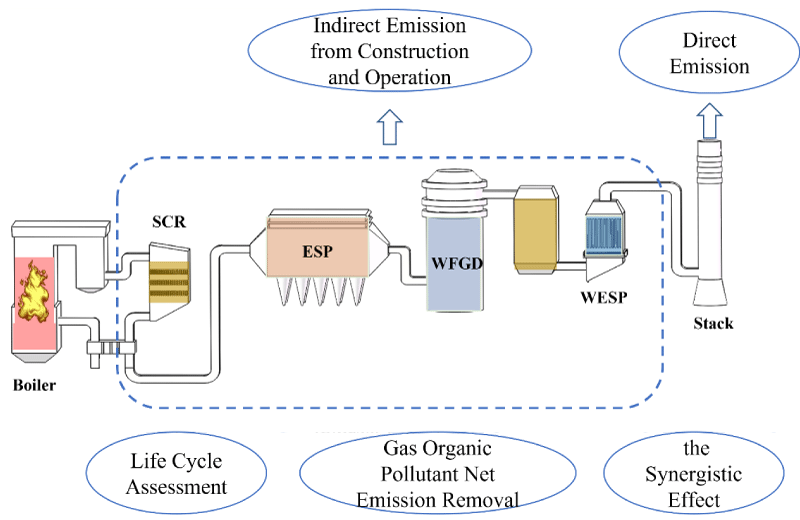
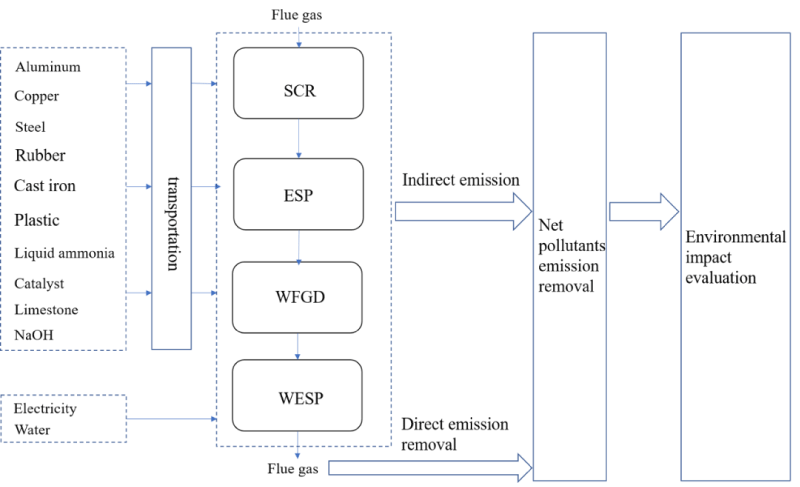
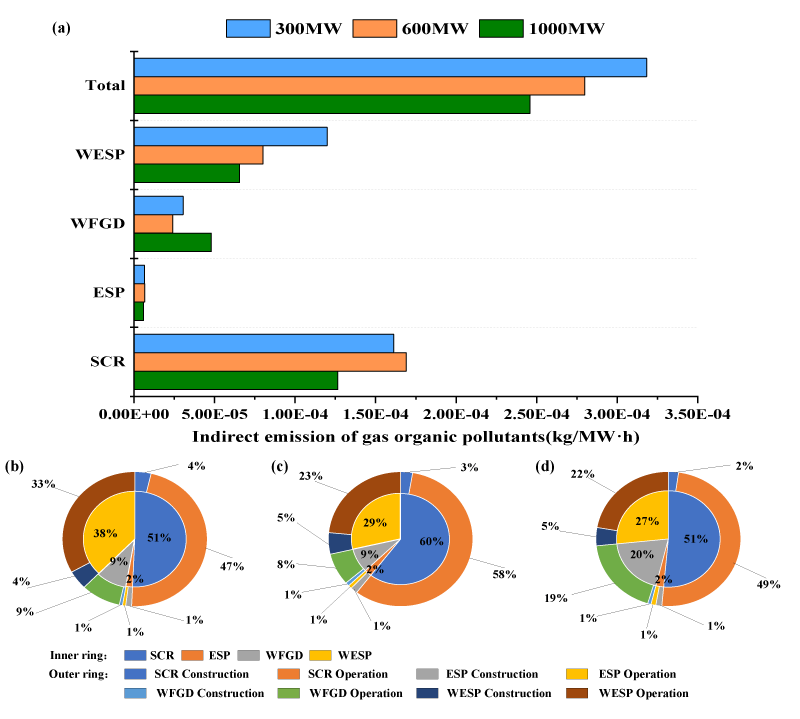
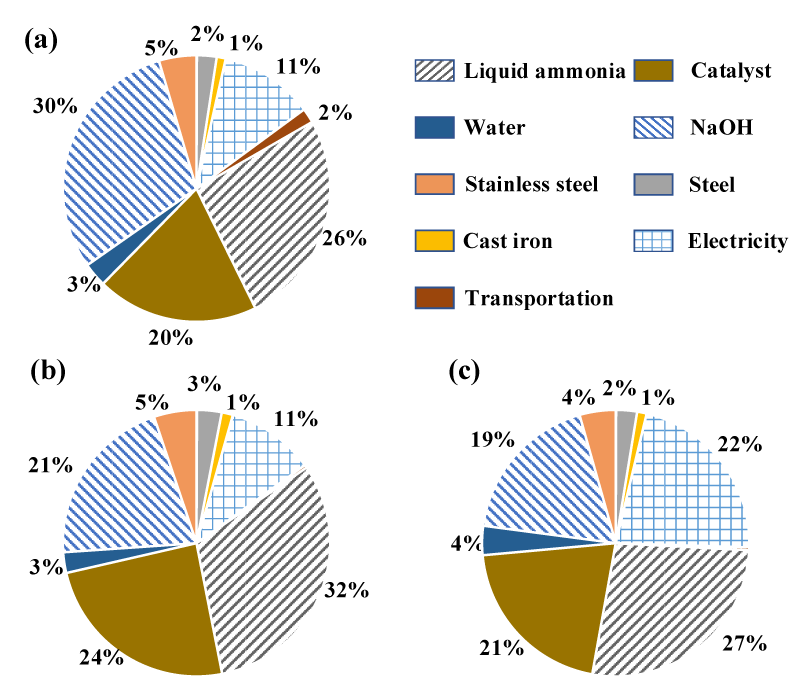
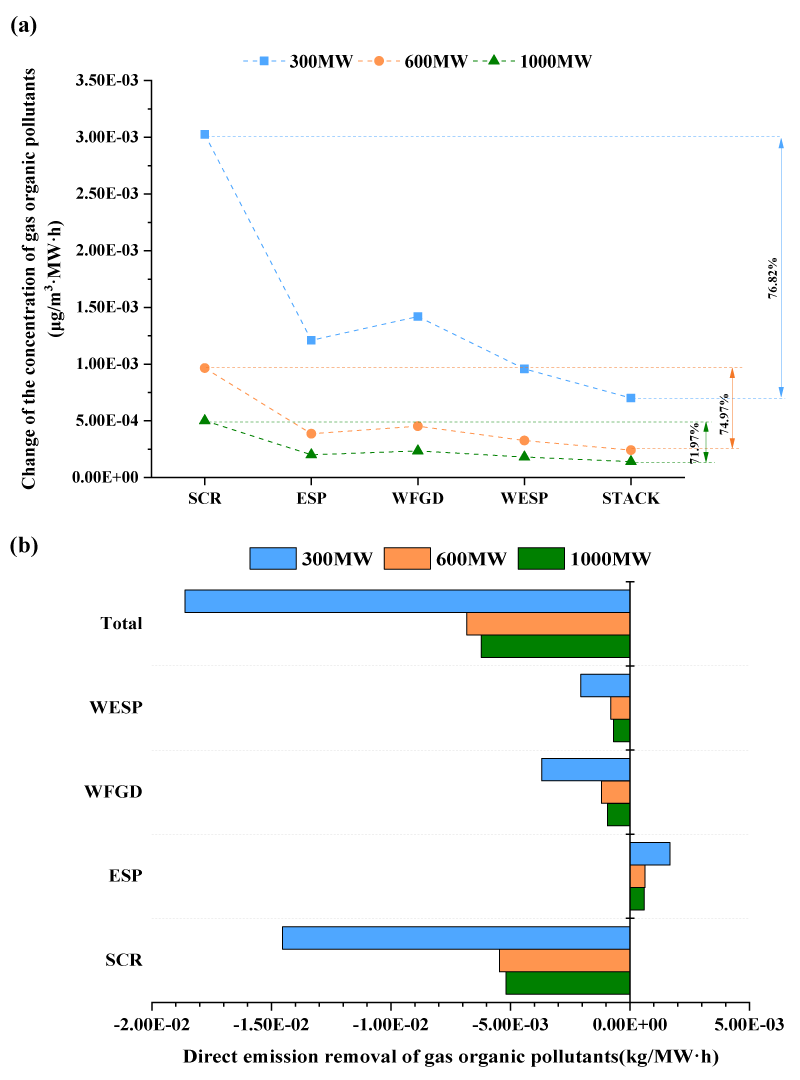
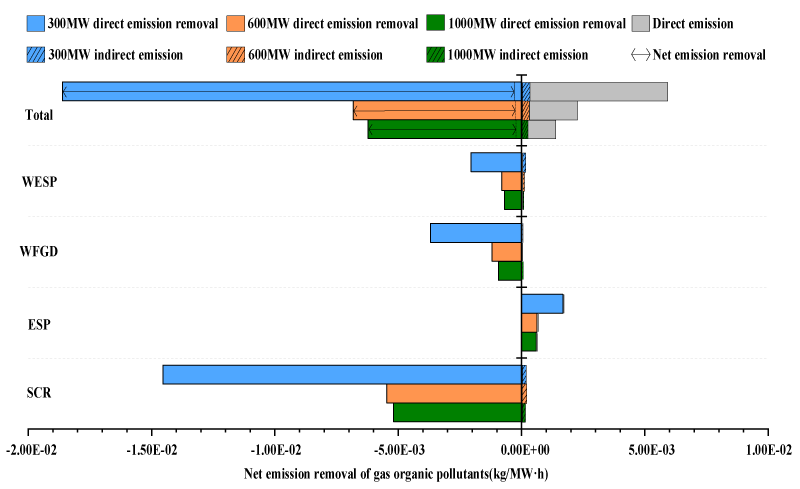
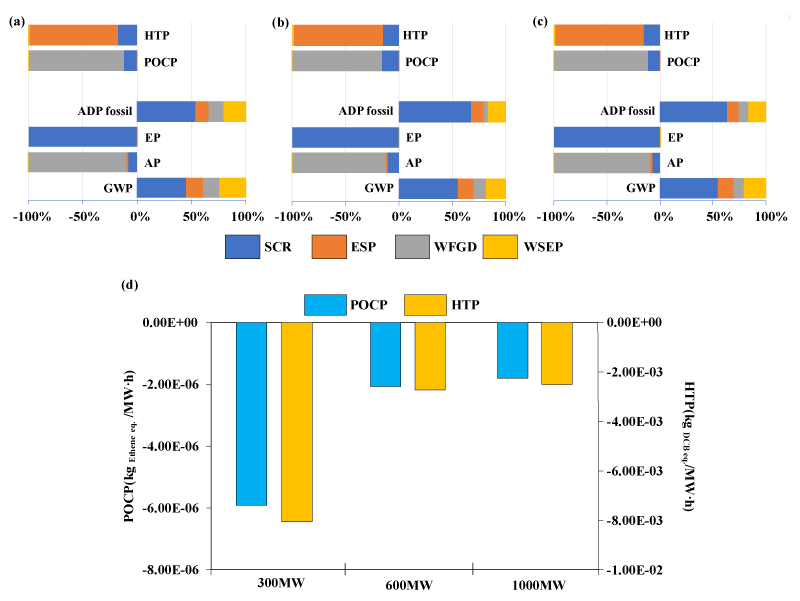
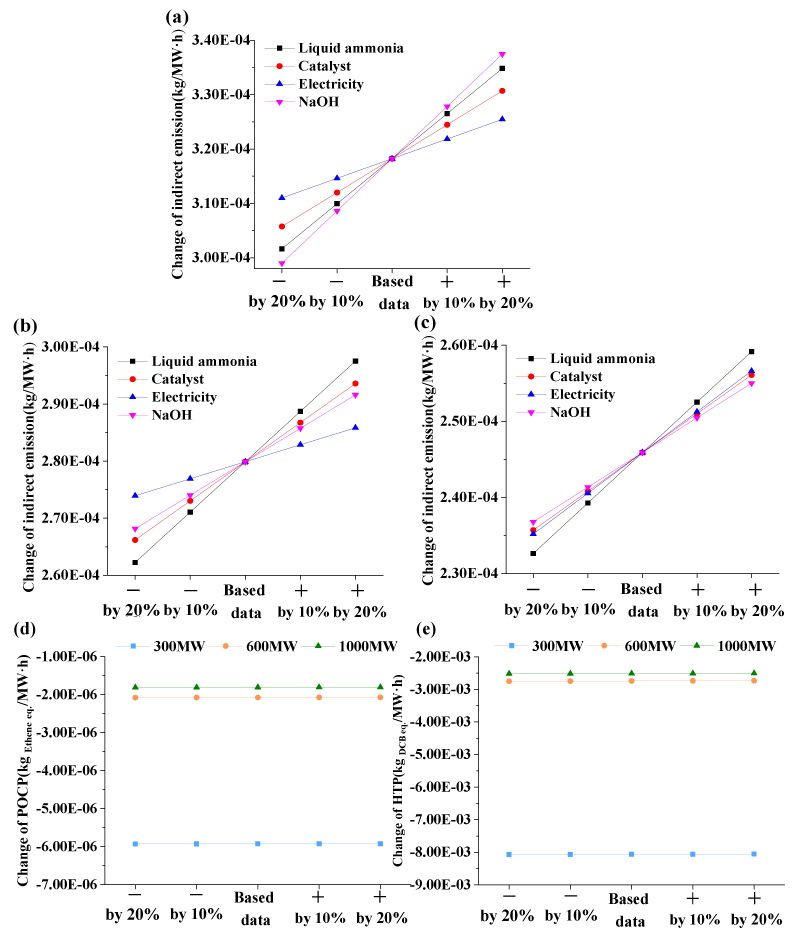


 Save to Mendeley
Save to Mendeley
